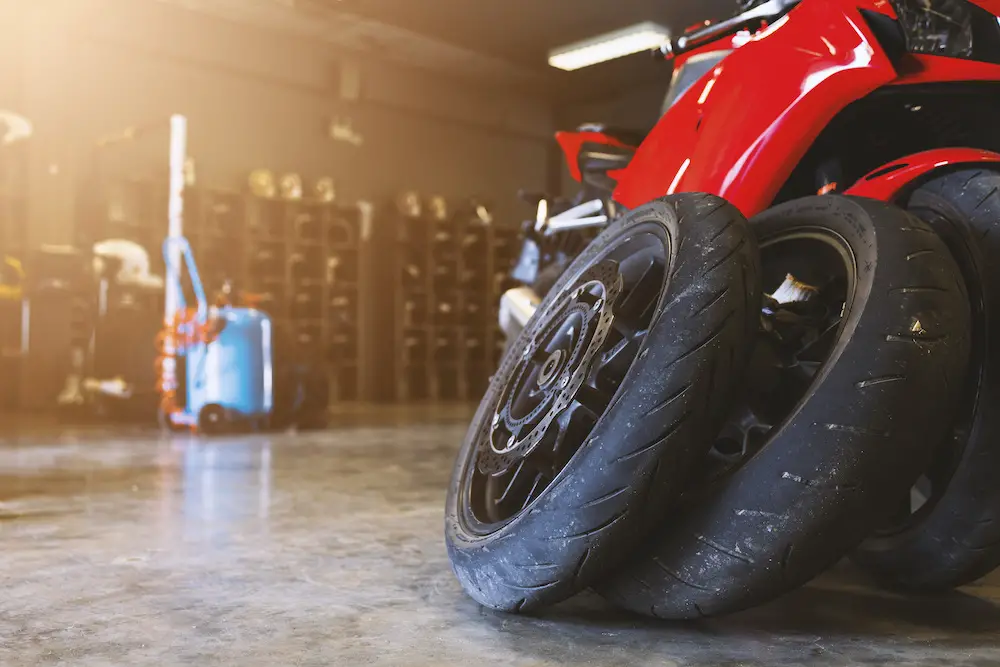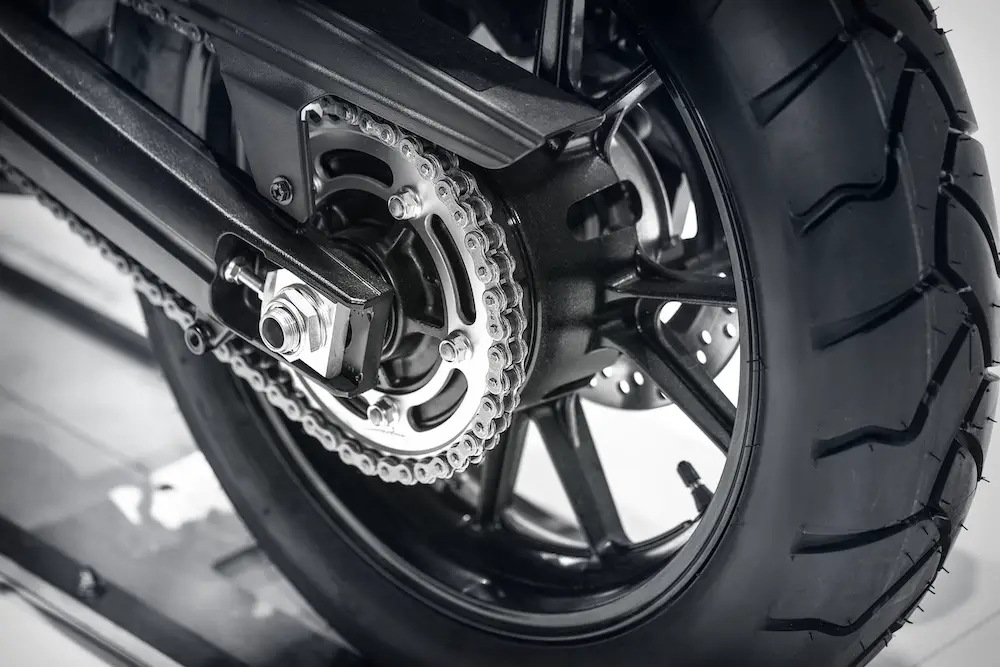The marking on the side of your motorcycle tire tells quite a story. It is part of your responsibility as a rider to know it. The thing is, it can be a bit confusing if you don’t know how to read a motorcycle tire.
If these codes don’t make sense to you, you’ve come to the right place. We will break down each of its components, one by one.
After reading, you should be able to choose a replacement tire with confidence. However, before we get to this, let us take a closer look at why you should get the right motorcycle tire.
Why You Should Get the Right Tire for Your Motorcycle
When you are getting ready for motorcycle riding season, one of the first things you need to check is your tires. Your tires are your points of contact to the road or whatever surface you will be driving on. Needless to say, they have a big job to do for you.
They transmit the engine’s power to the ground, allowing you to move forward. They also help absorb the impact from irregular surfaces, along with the shocks.
Many other important things depend on the quality of your tires, including braking, accelerating, and road grip. Outside of the motorcycle itself, choosing the right tires is one of the biggest decisions you have to make as a rider.
That is why manufacturers put all those markings on the tire sidewall. It contains all the information you need to make the right decision when shopping for new tires.
Below are the common terms that you need to be familiar with as you try to understand your motorcycle tire better.
An Introduction To Reading a Motorcycle Tire
Here’s a list of all the common terms that you would encounter when dealing with motorcycle tires:
Tread
The tread is the part of the tire that comes into contact with the road. It comes with various patterns and finishes to match different road surfaces.
Some work better on wet surfaces, while others are optimized for off-road riding. Your choice will ultimately depend on where you want to take your motorcycle.
Bead
The bead is the part of the tire that hugs the wheel. It fits snugly against the metal rim to prevent slippage when it rotates at fast speeds. It is usually made of steel wires enclosed in rubber material.
Sidewall
The sidewall is the area between the tread and the bead. While it does not have contact with either the road or the wheel, it is equally important for handling and load transfer. It is also the part of the wheel that height, profile, and aspect ratio are attributed to.
Carcass
Carcass refers to the tire’s body or the part under the tread. Motorcycle tires come in two builds: the radial and the bias ply.
How To Read a Motorcycle Tire
Motorcycle tires have their own set of codes that is unique from car tires. These codes describe the essential features of the tire, like the width, aspect ratio, and diameter. They also indicate the load index, speed rating, and maximum limit for air pressure.
To illustrate, let us try to break down a sample code for a front tire: 120/70 ZR 17. This code is in metric, which is the more common format.
The number 17 at the end of the code refers to the rim diameter, expressed in inches. It means that you should get a suitable tire for a 17-inch rim.
The R refers to the carcass type, which is Radial. Radial tires have reinforcing belts typically made of steel running across the tread from bead to bead.
The “Z” part of the code is the speed rating, and it means that your tire can run safely up to 149 mph.
Below is a table of all the codes for the speed rating.
|
Code |
Speed Rating (mph) |
| J | 62 |
| K | 68 |
| L | 75 |
| M | 81 |
| N | 87 |
| P | 93 |
| Q | 99 |
| R | 106 |
| S | 112 |
| T | 118 |
| U | 124 |
| H | 130 |
| V | 149 |
| W | 168 |
| Y | 186 |
| Z/ZR | 149+ |

The “180” or the first number of the code is the width of the tire when fully inflated, expressed in millimeters. All you have to do is divide it by 10 if you want centimeters.
The “55” is the aspect ratio or the percentage of the tire’s height off the rim with respect to its width. So in this example, the tire height is 55% of the width.
Older tires use the alphanumeric code. It came from a time when radial tires were not invented yet, and the sizes available were a bit limited.
Still, it is important for you to be familiar with it, especially if you’re a fan of the old days of motorcycling.
As an example, let us decipher the code MU85B16. The first two letters stand for the width of the tire. In this example, MU is equivalent to 140 millimeters.
Below is a size chart for the alphanumeric method.
|
Code |
Tire Width (mm) |
| MH | 80 |
| MJ | 90 |
| MM | 100 |
| MN/MP | 110 |
| MR | 120 |
| MT | 130 |
| MU | 140 |
| MV | 150 |
The number after the first two letters is the aspect ratio, expressed as the percentage of the sidewall height with respect to the tire width. So the sidewall is 85% of 140 millimeters, which is 119 millimeters.
The “B” is for the construction of the tire, which is Bias Ply. The last number (16) is the rim size or the diameter, which is in inches.
Other Parts of the Code
The next part of the code is the tire load rating. It is a two-digit number that indicates the maximum load capacity.
However, you would have to look up a chart to know the corresponding value in pounds.
The two-digit code ranges from 33 to 90, and the capacity is between 254 and 1,323 pounds.
Next to the load rating is a letter that represents the speed rating. In some brands, you would find the speed rating in this part of the code. After it is the symbol indicating whether your tire’s type is tubeless (TL) or tube (TT).
You will also see an arrow that points one way: the direction of the tire’s rotation. You must follow this recommendation when you install it.
Next, you will see the number of plies and the material used, the tread wear indicator, brand, and place of production.
Other Things To Remember
Now that you know how to read a motorcycle tire, it’s time to discuss the other things you need to consider.
Why You Can’t Put Wider or Narrower Tires on Your Rims
You have probably wondered at some point if you could put a wider or narrower tire on your motorcycle. While it is physically possible in some cases, it is not recommended.
Consider the first scenario where you install a tire wider than the rim. Doing this will push the sidewall out and give the side tread an extreme arc, which means less contact patch.
Obviously, this is something that would compromise your safety on the road.
On the flip side, putting a narrow tire will flatten its profile and expose the rim. It will be harder for you to turn corners and leave your wheel vulnerable to damage at the same time.
As much as possible, choose the same specs as your OEM tire. Refer to your manual first or ask an expert before upgrading to an aftermarket option.
The PSI Stamped on Your Tire’s Sidewall Is Not the Recommended Pressure
If you see the PSI on your tire’s sidewall, remember that it is the maximum pressure that the tire can take. It is not the recommended pressure.
Note that the tire manufacturer does not know what motorcycle you are using or what surface you are driving on. You should refer to your vehicle’s manual for the inflation guidelines.
Tube vs. Tubeless Motorcycle Tires
Generally, spoked wheels use tube-type tires, while cast wheels run tubeless tires. However, there are some exceptions to this rule.
You could also fit a tubeless tire on a rim designed for tube types. That said, you would have to install a tube into the tire before mounting it.
How Long Tires Last
If you drive between 12,000 and 15,000 miles a year, your motorcycle tires will last from three to five years. Of course, other factors like maintenance, driving style, and road conditions can affect this.
Choose the Right Tire
Your safety and comfort on the road will depend to a large extent on your motorcycle tires. That is why you must make the right choice when the time comes for you to replace them.
Manufacturers have made it easy for you by filling the tire sidewall with important details. Your job now is to understand what they mean so you can make the right decision.

